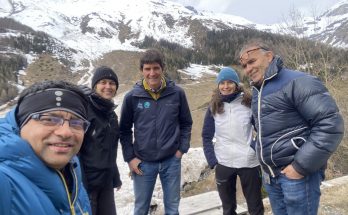A real-time, automated SfM monitoring technique was adapted and tested on the Pont Bourquin landslide in Ormont-Dessus, Switzerland, and on a small scale model in the lab. The technique involved automatically taking photos from different positions, sending them to a server, reconstructing scaled and referenced 3D models, and computing change over time for use in further analysis.
The setup in Pont Bourquin failed to produce usable data, mainly due to the impossibility for the cameras to cover the landslide from enough angles, resulting in poor 3D models, but also due to the lack of cameras used, as well as power source and focus issues. However, many lessons were learned from that setup, especially related to the site-specific feasibility analysis.
The setup in the lab worked adequately, and produced quality 3D models, and accurate change detection results. It was also crucial in testing and adapting the automatic scripts. The data produced was also used for further analysis, including plotting change and rate of change at the foot of the landslide over time, computing 2D displacement vectors as well as shear and strain rates in 2D, visualizing cross sections, and volume computing. Evaluating the change caused by the landslide was therefore accomplished successfully.
Real-time, automated monitoring of landslides using SfM is achievable, but only if the necessary conditions are met, especially the possibility to install enough cameras that cover enough angles to produce high quality and accurate 3D models. Therefore, a feasibility analysis must first be made on a site-by-site basis, determining if the right conditions are met.
Disaster Risk Reduction, Hazard Assesment, and Risk Analysis

